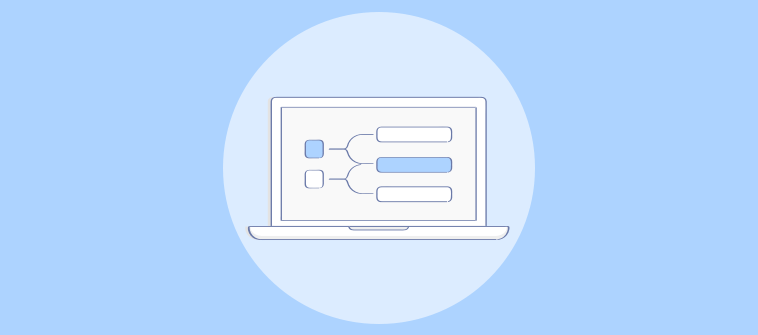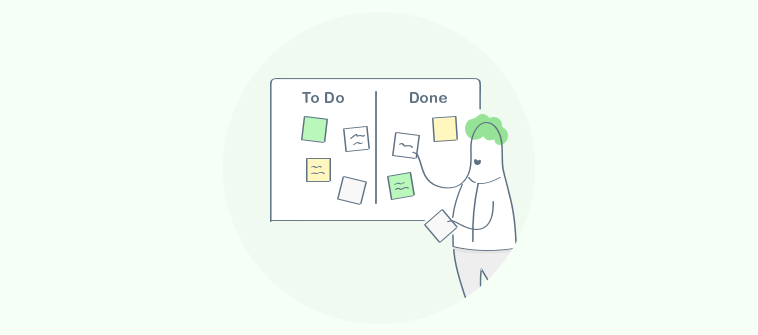Meet Jess. She works in her university’s business office. Every day, she has a number of tasks to get done. Many of them are routine tasks like processing purchase requisitions, travel requests or leave approvals. Sometimes, Jess performs one-off tasks as part of a specific project like gathering numbers for a budget. And, like everyone, she also does some random things like setting up the office March Madness pool.
Like you, Jess’ everyday job is hugely impacted by automation. Let’s take a closer look:
Email Doesn’t Work Too Well Anymore
Before email, Jess would send documents in yellow interoffice envelopes with actual carbon copies. Email arrived in the mid-1990s and, suddenly, she could instantly communicate with colleagues anywhere.
How did that change Jess’ day-to-day work? Those interoffice memos quickly became a thing of the past. She started using email for everything. When she wanted to take some time off, she’d email her manager. When she needed a professor’s signature on a conference travel request, she’d attach the document to an email and fire it off. It was fast, free and easy.
Those qualities – zero cost, 24×7 access, instant delivery – are exactly why Jess got quickly buried in an unmanageable torrent of email. Like everyone, she has a smartphone and she’s connected to her email all the time.
The effects have been studied in detail: we’re wasting more time than ever (1 day/week), we’re measurably less creative, and have less time for intelligent thought. We know that 24×7 access to email is bad for our mental health and cognitive well-being.
Email is simply not a good solution for digitizing operations.
Chat Is No Better
When Jess’ university introduced a live chat software, things were hardly better – it’s the same stress as emails but in real-time. The little red badge is addictive and Jess feels compelled to check her chat messages. To be sure, chat does have significant benefits; e.g. it promotes social cohesion that improves knowledge worker productivity.
But, what’s an important task and what’s simply a casual chat? It’s difficult to distinguish, track, or audit.
Task Management Is for Grocery Lists
What about To-Do lists? There are dozens of cloud-based software choices such as ProProfs task management software. Such task management software helps you organize individual tasks no matter where they come from. You can prioritize them and make sure the most important ones get done first.
The focus when using a task management software, however, is on individual tasks. Once the task is done, it’s archived. For example, if Jess finishes reviewing a travel request and charges it to a particular expense account, she can mark her individual task complete but she must still manually forward it to Finance. She’ll probably send an email.
Task management software is a great solution for things like grocery lists, but not so good for operations. You can’t route tasks automatically, collect structured information (crucial, if you want to deploy ML and AI) or track processes.
Data does not flow automatically from one step to another or from one person to the next. You have to send it along manually.
Related Read: Manage Multiple Tasks with a Feature Rich ProProfs Project
Project Management Is for Efficient Project Execution
Let’s say the university decides to upgrade its student activity center. This is a one-time event with an end – a project. It’s collaborative and consists of multiple tasks with dependencies. Jess may end up performing some of those tasks e.g. pull together a cost spreadsheet for equipment that must be purchased. Installing the equipment is a separate task for someone else, but it cannot be performed until the purchase is completed.
Project management software e.g. ProProfs Project, helps organize these projects and their individual tasks so that the project stays on track and gets completed on time.
Projects usually are not repeatable activities performed multiple times. By their very nature, projects must be flexible since unexpected challenges always come up. The team probably has a general idea and plan but the exact steps are not precisely determined upfront. So, teams make ad-hoc assignments depending on who is available and what skills are required.
Projects are also limited in nature – Jess simply cannot perform tasks in dozens or hundreds of projects. But, with the right project management software, you can ensure proper project execution.
Project management tools also promote transparency so that project managers can get a comprehensive view of who is working on what. It’s easy to assign tasks to individuals – the software often has a nice drag-&-drop interface – and to keep the team informed about the status of the project as a whole.
When we compare process management vs project management. In case of process management, data can flow from one task to the next, it’s still somewhat manual. When Jess completes her costing spreadsheet, she will have to send it to the project manager. Perhaps, the software lets her attach it to her task.
There’s no concept of “iteratively improving how we do things”, as each project is unique. Since projects are not limited in volume, it is essential to get a project management software on board to analyze and reinvent them to optimizing tasks.
Manage Multiple Projects with Using Project Management Software. Try ProProfs Project for Free.
Scaling Operations Requires Process Automation
What’s a process? For Jess, processing a time-off request or a purchase requisition is an example of an everyday business process. She does it many times every day and it’s always performed in a predefined way.
An individual process may have 3 steps or 10 but the general concept is straightforward: each step delivers data from Point A to Point B with all the required signatures, checks, reviews and authorizations.
Processes usually contain one or more steps performed by humans. But, they can also include automated system tasks. They can include conditional and parallel routing, but the overall structure of the process is known ‘apriori’.
Process automation software is like a GPS system for your organization. It electronically routes data to the right people at the right time. Unlike email, tasks or projects, no one needs to understand or perform the routing. The software handles it automatically and ensures that business standards cannot be bypassed e.g. a second level of approval is required for amounts greater than $10,000.
The software always includes some form of task list so authorized users can view their tasks and can comment, modify and sign documents in a systematic manner. Unlike task management software, once Jess completes her review of the aforementioned time off request, the data automatically flows to HR. They can immediately access forms, data and documents necessary to complete their piece of the process.
Process automation software can also handle enormous volumes. Jess and her colleagues could easily complete hundreds of purchase requisitions, travel requests, expense reimbursements and time off requests in a week. Imagine dealing with that kind of volume over email.
Process automation’s main goal is productivity – instead of employees spending time on paperwork, it wants to automate these routine tasks and minimize time spent on them. Employees like Jess can then focus on more important tasks like business insights or talent acquisition.
Process Management vs Project Management vs Task Management: What’s The Difference in The Software?
| Task Management Software | Project Management Software | Process Management Software | |
|---|---|---|---|
| Tool Provider | Todoist, Wunderlist | ProProfs | Frevvo |
| What is it used for? | Prioritizing individual tasks in a to-do list. | Repeatable projects that require ad-hoc collaboration with team members. | Repeatable, often high-volume activities that follow a reliable preset pattern to produce a certain business outcome. |
| What’s an example? | “Buy milk” or “Submit leave request” | “Replace ERP system” or “Move office to a new location” | “Approve a purchase order” or “Onboard a new hire” |
| What are the main goals? | Improve personal productivity by getting more important tasks done. | Facilitate coordination, make it easy to assign tasks and provide a complete view so projects are completed on time. | Improve organizational productivity by freeing employees from paperwork and by optimizing everyday processes. |
| What type of business data is produced? | None. Completed tasks are simply archived. | High value. A project post-mortem can be implemented by generating reports to ensure all inefficiencies are exposed. | High value. Data is digital and flows in real-time from step to step. It can be analyzed in near real-time to reveal business insights. Digital data is also a prerequisite for ML, AI, etc. |
| What is the business value? | Low. People commonly use paper and pencil. | Medium to High. Multiple people can work together to achieve a specific albeit one-off goal. | High. Ensures collaboration, consistency of operations and optimal use of talent. |
Task Management vs Project Management, or Process Management: Which Software Do You Need?
Email, chat, project management task lists, and process management are very different things. Each has its place. Task list software helps personal productivity.
Process management is a mature and well-understood space. But, when it comes to choosing the right solution, it’s absolutely essential to do your research and know what you need. So, to successfully complete projects of any significant size involving multiple people, you would need to choose a project management software with the needed features to manage projects, tasks, teams, and clients.
You can try to use any process management software, but if you really want to run reliable, scalable and efficient operations, you must choose a robust project management software.
In a future of work where business speed is only accelerating, the opposite is also true – continue with business-as-usual and you risk being wiped out.
Recommended Read:
FREE. All Features. FOREVER!
Try our Forever FREE account with all premium features!





